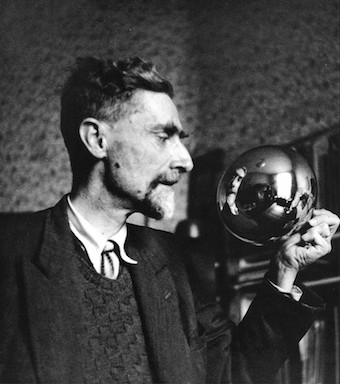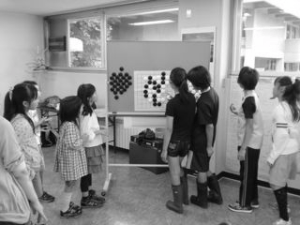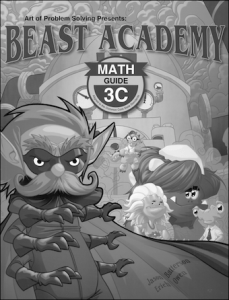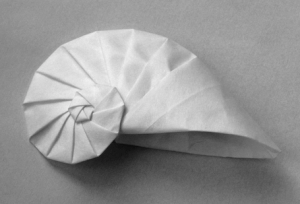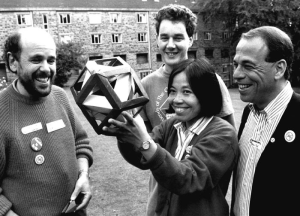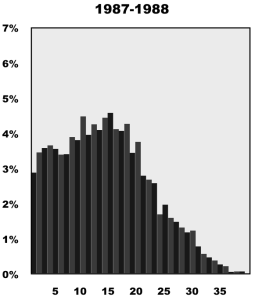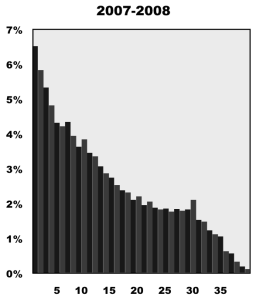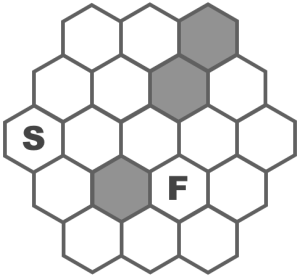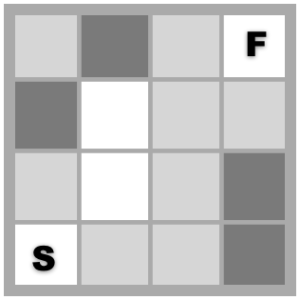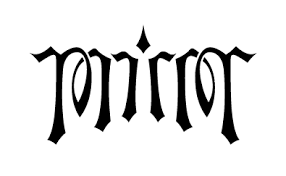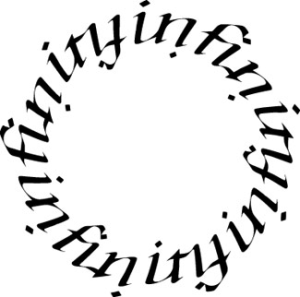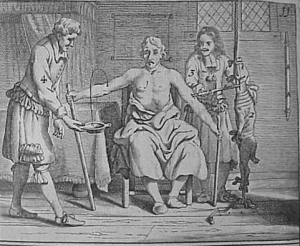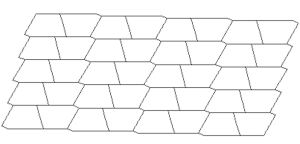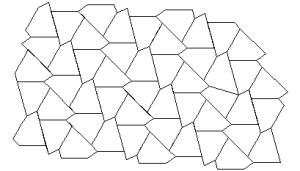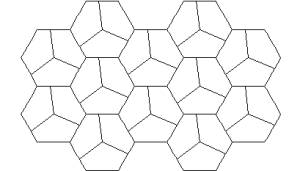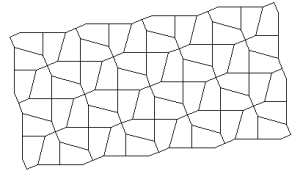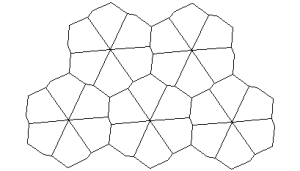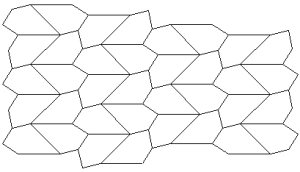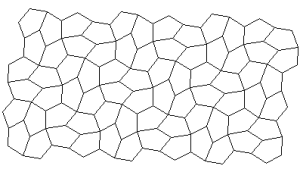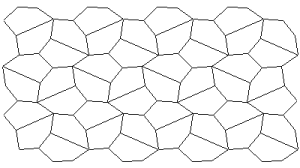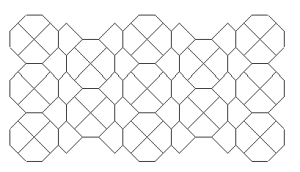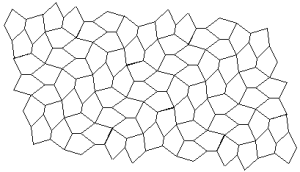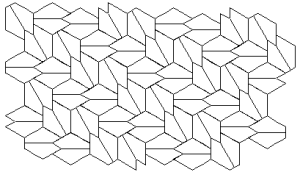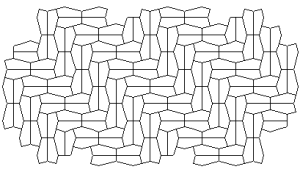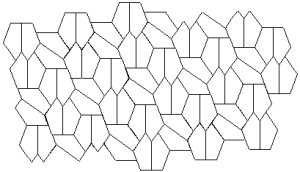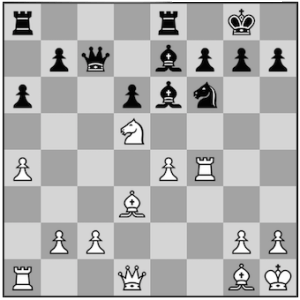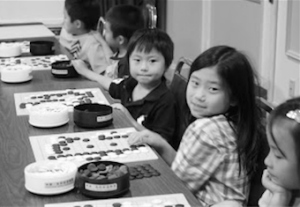
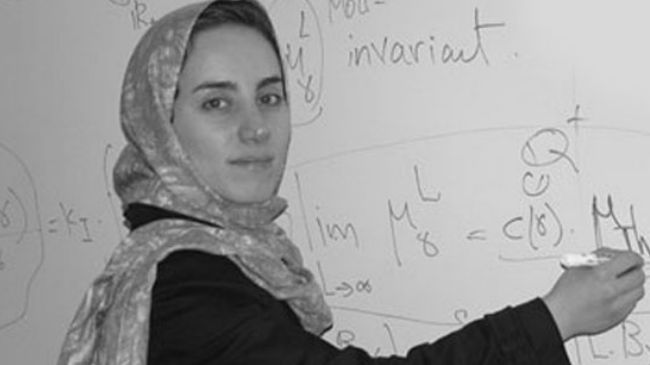
Maryam Mirzakhani
1977 -
In 1994 Iranian, Maryam Mirzakhani, got a gold medal in the International Mathematical Olympiad in Hong Kong. The next year she got a second gold in Toronto.
Fast forward 20 years. In 2014, Maryam became Iran’s first winner of highest award in mathematics – the Fields Medal. She’s also the first woman mathematician so honoured. The win caused controversy in Iran when the head-uncovered picture below was tweeted by President Hassan Rouhani congratulating Maryam.

Luckily, the Iranian media found an old photo of her with a hijab and photoshopped the politically correct picture above which was published in Iran.
Many of Iran’s top mathematicians choose to leave the country. This is irritating for a country that obviously does a good job in identifying and nurturing its talented youth – both male and female.
A sad coincidence – In Calgary I share office-space with the brother of one of those who died in the 1998 bus crash which killed many of Iran’s top young mathematicians. Maryam survived the crash.
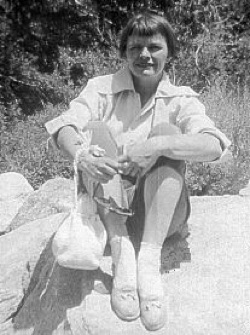
Julia Robinson
1919-1985
The first woman president of the American Mathematical Society, Julia was instrumental in proving Hilbert’s tenth problem unsolvable.
A Julia Robinson Mathematics Festival is a fantastic way to get your school community involved in collaborative mathematics. MathPickle helped put on the first Julia Robinson Math Festival in Canada on March 1st, 2015, and the first one in China on May 30th, 2015.
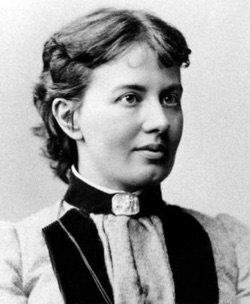
Sofia Kovalevskaya
1850 - 1891
In 1874 Sofia became the first woman to receive a doctorate in mathematics after escaping a conservative Russia through a pretend marriage. Did it help her secure a lucrative career in a university? Read of her turbulent life here.
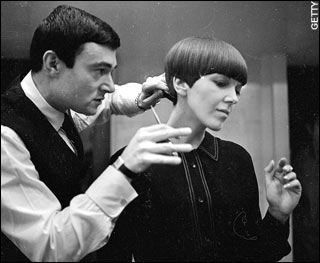
Vidal Sassoon
1928 - 2012
Vidal Sassoon was an anti-fascist street-thug who became a mathematical sculptor of hair:
We learned to put discipline in the haircuts by using actual geometry, actual architectural shapes and bone structure. The cut had to be perfect and layered beautifully, so that when a woman shook it, it just fell back in.
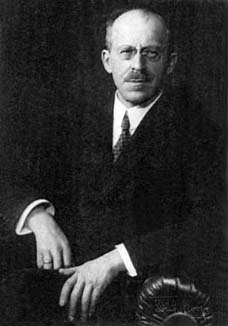
Issai Schur
1875 - 1941
Issai Schur was a quiet, naive mathematician who had very little time for religion or politics. He could never understand the Nazi preoccupation with his Jewish heritage. In his mind, he was a German – not a Jew. Ousted from his respected academic position in Germany, he ended up in Palestine where he died in poverty on his 66th birthday.
We remember him with the an unsolved problem which he asked in 1916 – Mathematicians call it Schur’s Sum-Free Partition Problem, but despite the big words, this problem belongs in front of every classroom learning addition.
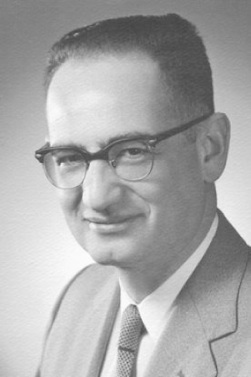
Leo Moser
1921-1970
Leo Moser is the first person who advocated unsolved problems being used in K-12 education. He asked many tough problems with child-like zeal:
What’s the area of the smallest house that a unit worm can live comfortably?
…meaning what shape can cover a worm no matter how he curls up?
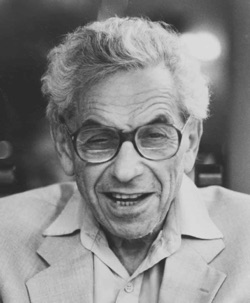
Paul Erd?s
1913 - 1996
Paul Erd?s was one of the greatest mathematicians of the 20th century. He roamed the world, with no fixed address – moving from house to house as the guest of other mathematicians – generating living and travelling expenses by giving lectures. Most mathematicians deteriorate as they grow into middle age, but Paul was contributing mightily till his death at a mathematics conference. He is author or co-author of more mathematical papers than anybody else in history.
Here is a question he asked that kindergarten students can understand, but remains unsolved:
How many little squares of the same size can fit into a big square of a certain size?
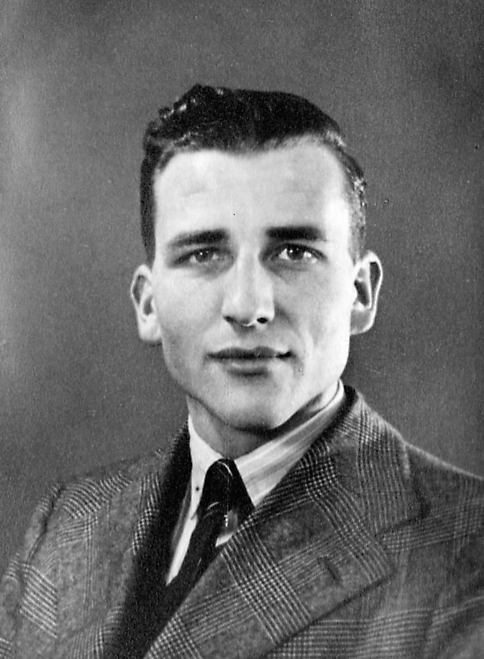
John Forbes Nash, Jr.
1928 – 2015
John Nash was the mathematician who developed game theory. He is best known to adult audiences through the movie “A Beautiful Mind.” He created the board game Hex, in which players take turns filling a hex in an attempt to link opposite sides. This game is a superb for young children because of its simple rules, and because it can be played on game boards of different sizes. However, just because it is easy to learn does not mean that it is easy to master!
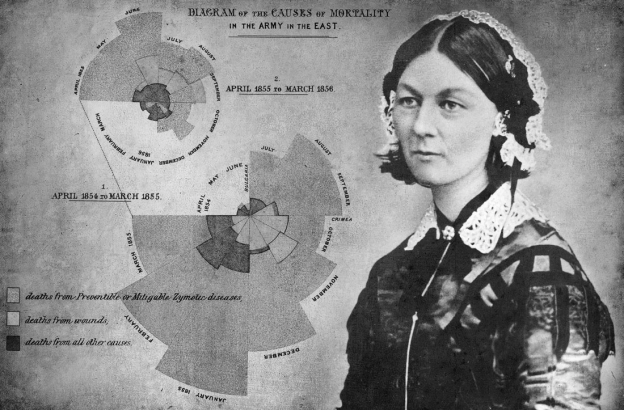
Florence Nightingale
1820-1910
The woman who started the practice of nursing is also one of the great innovators in presenting statistical information so that it could be understood by average people. The Nightingale rose diagram above was her own creation and used to communicate mortality among the British army-men fighting in Crimea. She was the first woman in London’s Royal Statistical Society.
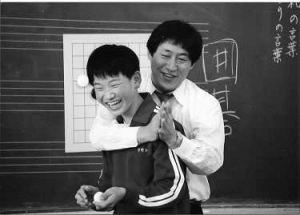
Yasuda Yasutoshi
1964 -
The single most important voice in K-2 education worldwide is a Japanese go player. Yasuda Yasutoshi’s ideas about teaching rigorous thinking through the game of go is the single most important educational experiment that needs doing.
MathPickle prediction: K-2 students who get at least one year extensive training in go rather than a traditional mathematics curriculum will out perform their peers by age 15.
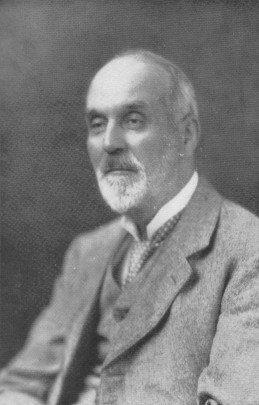
Henry Dudeney
1857 - 1930
Henry Dudeney was a puzzle designer of deep ingenuity. He had an intense correspondence with the American puzzle master Sam Lloyd, but the relationship grew embittered when Sam published Henry’s puzzles without giving due credit.
One of Henry’s originals is the No-Three-In-A-Line-Problem which he posed in 1917 and which is suitable for every grade 1 class exploring patterns.
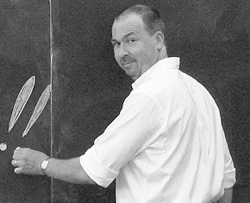
James Tanton
1966 -
James Tanton has a vision of mathematics education identical to my own. He introduces tough, engaging problems to his students (lucky students!) and offers videos to inspire teachers. His natural “centre of gravity” is in high school. Visit him here.

Reiner Knizia
1957 -
Reiner is one of the most successful board game inventors in history. Many of his games are among the top 100 on Board Game Geek.
He has a PhD in mathematics, so it is no surprise that many of his games belong in the mathematics classroom.
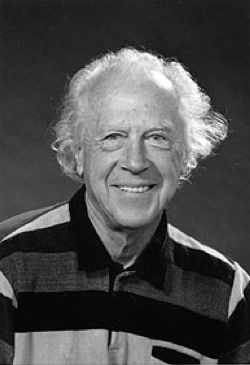
Gerhard Ringel
1919 - 2008
Gerhard Ringel’s twin passions were mathematics and butterflies. Upon his retirement from the University of California, Santa Cruz, he donated 5000 butterfly specimens – many of which he had reared from the egg.
His Graceful Tree Conjecture has remained unsolved since 1967, and is essential in any class learning subtraction.
To see the the problem in a real grade three classroom go here.
Nothing must be advanced in a positive manner. The mind of the pupil is to be the principal operator; it must instruct, convince, and confute itself; and when it arrives at some important truth or result, it must be through its own powers. It ought not even to perceive that it has been guided thither.
I think the universe is pure geometry – basically, a beautiful shape twisting around and dancing over space-time.
Music is the arithmetic of sounds as optics is the geometry of light.
If you’re sitting across the table from someone, the geometry of the situation says ‘confrontation.’ If you’re walking with somebody, you’re heading in the same direction, and the spatial dance you’re doing is a little more cooperative.
The ballet makes us look at those bodies, it makes us listen to that music, it makes us wonder at the geometry, of the way they come together. The way that extraordinary space is controlled and given such emotional force.
Without mathematics, there’s nothing you can do. Everything around you is mathematics. Everything around you is numbers.
I’m writing a book. I’ve got the page numbers done.
God made integers, all else is the work of man.
In my school, the brightest boys did math and physics, the less bright did physics and chemistry, and the least bright did biology. I wanted to do math and physics, but my father made me do chemistry because he thought there would be no jobs for mathematicians.
There may be aliens in our Milky Way galaxy, and there are billions of other galaxies. The probability is almost certain that there is life somewhere in space.
When you select games to use with your students, what influences your decision?
- What other teachers say about the game 48%
- The game includes assessment, tracking, and/or other classroom management features 43%
- Our experience or preference for the game 42%
- Research claims/evidence of the game’s educational impact 37%
- What your students say about the game 31%
- How much the game costs 24%
Survey of 513 teachers who use digital games by the Joan Ganz Cooney Center

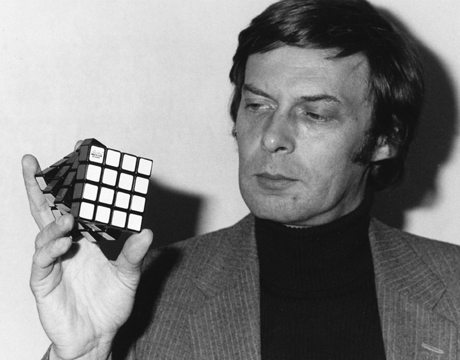
Ernö Rubik
1944 -
Ernö is the Hungarian inventor of Rubik’s Cube.
I’ve always been passionate about geometry and the study of three-dimensional forms.
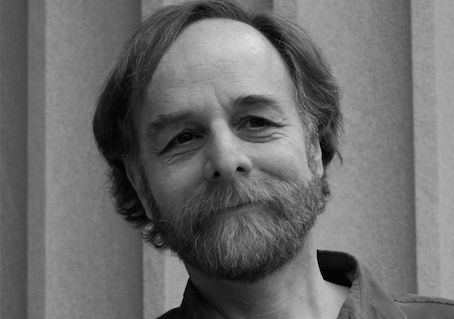
Scot Osterweil
Scot Osterweil is the innovative mathematics educator who has designed the mathematical game, Lure of the Labyrinth
This game is so good that it should be imbedded into every K-12 curriculum… or at least suggested for summer homework.
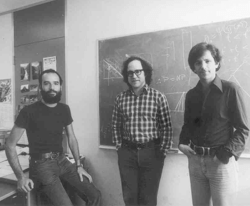
Rivest, Shamir and Aldeman
Publicly discovered and published Public Key Cryptography in 1977 a few years after it was discovered by mathematicians working with British Intelligence.
Cracking their cipher (which protects government secrets and banking transactions worldwide) is an excellent problem for a class to tackle when a quarter of them are capable of factoring numbers like 35 or 39.
YouTube Video: https://youtu.be/Jvjz_ChelmI
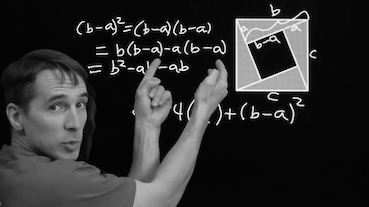
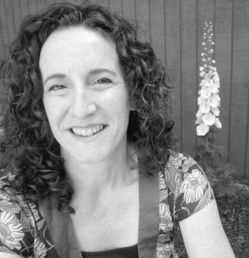
Malke Rosenfeld
Malke explores the intersection of mathematics and dance. “Math in your feet” is the most physically dynamic mathematics initiative with children creating their own dance. I am a little biased because we are writing a book together for young children: “Socks are like Pants, Dogs are like Cats.”
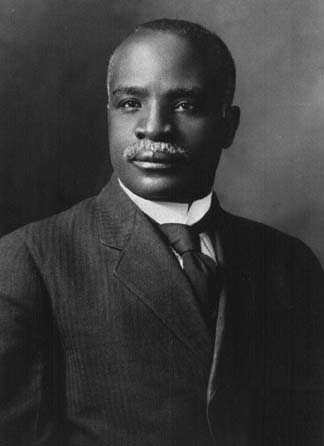
Kelly Miller
1863 - 1939
Kelly Miller was born in Winnsboro, South Carolina in 1863. His mother was a slave, but his father who had fought in the confederate army was a free man. Reverend Willard Richardson discovered Kelly’s aptitude for mathematics. Kelly became the first black man to embark on a degree in graduate mathematics from Johns Hopkins from 1887 – 1889 at which time they stopped accepting blacks and doubled the fees so as to make it prohibitively expensive for him to continue his studies. The following year he took up a faculty position in Harvard where he used his position to argue for civil rights.

Lothar Collatz
1910 - 1990
In 1937 Lothar posed the great problem which mathematicians now refer to as the Collatz conjecture: Starting at any positive integer iteratively divide by 2 if it is even – or multiply by 3 and add one if it is odd. This is done again and again. The Collatz conjecture is that you will always get to 1. It is essential for every child learning multiplication to be exposed to this unsolved problem.
YouTube video: https://youtu.be/R4oINmqHXVY
*The problem also requires division by 2, but students should learn the problem when they are learning to multiply. MathPickle introduces it in combination with the easy-to-solve analogous problem where odd numbers get multiplied by three and one is subtracted from the product.

Amy Jo Kim
Amy Jo Kim is an electronic game designer and a web community architect with an academic background in neuroscience and computer science. She monetizes these strengths through her company ShuffleBrain.com. The equally talented Scott Kim, her husband, also features in this list.
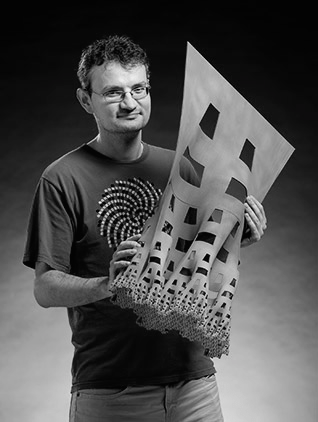
Henry Segerman
Henry Segerman is a gifted man at the juncture of mathematics and art. His art has the minimalist beauty that mathematicians find irresistible 😉 Here is his web site: http://www.segerman.org/
I had the joy to meet Henry at Gathering for Gardner in 2010 in Atlanta.
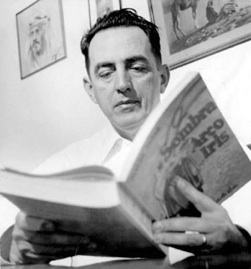
Júlio César de Mello e Souza
1895 - 1974
A mathematician and educator who argued against classroom instruction and for mathematical laboratories and games. He achieved worldwide fame under the pen name Malba Tahan.
His book “The Man who Counted” is still a best seller. His native Brazil never took his ideas on mathematics education seriously.
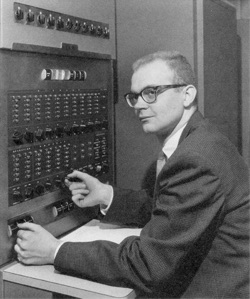
Donald Knuth
1938 -
This is a photo of Donald Knuth, age 20, at his first IBM 650 computer in 1958. After Richard Guy, Donald Knuth is the greatest inspiration for MathPickle through his tome “The Art of Computer Programming.” One of the problems that he explored is “Langford pairing” which is suitable for a full school assembly. It was tried in front of 600 children at Collingwood school in 2014 with great success 😉
A giant is hungry and dreams of a student sandwich. Two brave students from each grade 1-3 are required. They need to stack themselves (horizontally) between two giant slices of bread so that the number of students between the grade 1s is 1; the number of students between the grade 2s is 2; and the number of students between the grade 3s is 3. Here is one solution that the full assembly can solve:
3 1 2 1 3 2
Can we add other grades to this sandwich?
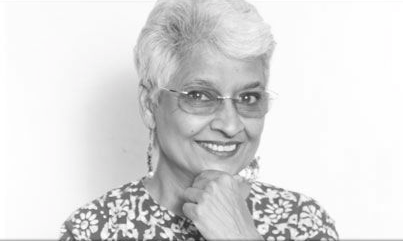
Sharanjeet Shan
Unsatisfied with South Africa’s education system, Sharanjeet Shan has taken it upon herself to improve the level of mathematics in the country. She impacts 175,000 South African students. Her quotes say it most eloquently:
Math is important because it’s a skill of life. Everything you do is connected to mathematics. It’s the discipline of nature. Understanding maths makes you a better person in terms of how you solve problems. You cannot get away from it
Algebra is a skill of understanding patterns.
80% of careers require some amount of quantitative literacy.
Listen to a radio interview with her here.
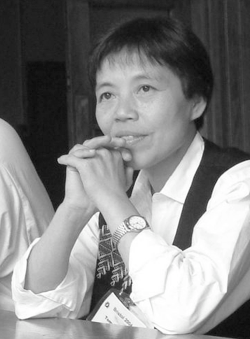
Tomoko Fuse
1951 -
Tomoko is a master of modular origami. Her beautiful designs belong somewhere in every child’s experience of mathematics. There are many instructional videos on YouTube if you want to try to fold some of your own, but the ones pictured below are advanced.
Dave Brill, Nick Robinson, Tomoko Fuse, and the late Michael Shall in Sheffield, 1989
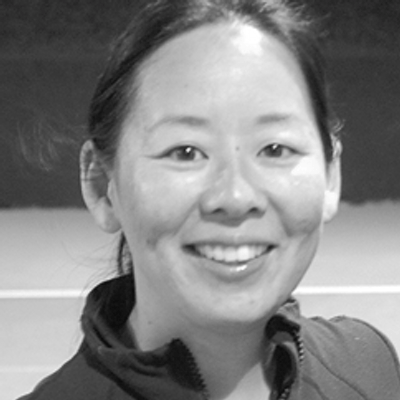
Lora Saarnio
Lora Saarnio is dedicated to the mathematics classroom and to board games. After learning chess at the incredibly old age of 19 she became the 36th ranked female chess player in the US. Together we have helped facilitate the Julia Robinson Mathematics Festival in the US, China and Canada.

Bathsheba Grossman
I admit it – I am a HUGE fan of Bathsheba Grossman’s work.
When MathPickle hits big time, all its corporate office doorknobs will be Bathsheba Grossman doorknobs.
You’ve got to admit that’s much more interesting than the gold dreams of Midas.
Here is an excellent interview with Bathsheba together with snapshots of her art.
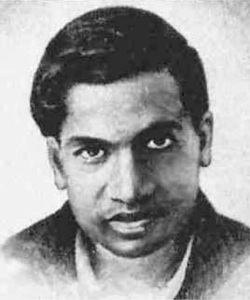
Srinivasa Ramanujan
1887 - 1920
For many mathematicians, this man shares the same sky-high pedestal with Archimedes, Newton, Gauss and Euler.
Ramanujan had no formal education in pure mathematics yet developed incredible results. His correspondence with the British mathematician G. H. Hardy are legendary. Can you imagine being an upper crust English gentleman and receiving a mathematical manuscript from the backwaters of the Indian subcontinent. Surely there would be nothing of interest.
One sequence that Ramanujan explored were the positive integers that have more factors than any smaller positive integers. For example 30 has eight factors 1, 2, 3, 5, 6, 10, 15, 30. If that is more factors than any smaller number, then 30 is a “Highly Composite Number.” Alas, 24 also has eight factors, so 30 is not included. In 1915, Ramanujan impressively found the first 102 Highly Composite Numbers with a single omission: 293,318,625,600.
MathPickle introduces Ramanujan’s Highly Composite Numbers when half the students in a class can find all the factors of 36, 40 and 42.
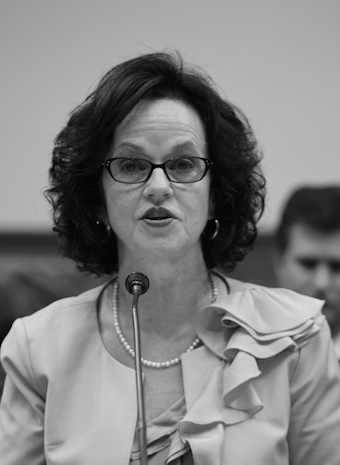
Deborah Ball
The most impressive set of statistics that I have seen used in a presentation is by Deborah Ball at the Library of Congress on April 16th, 2015.
The statistics gave a 1-2 punch:
1) Students of first year teachers perform 3% lower than average students. Students of second year teachers are nearly as strong as long-term teachers.
2) Teacher demographics show that the number of first year teachers in the workforce has recently risen from 3% to 6.5%:
It was more than just the raw statistics that were impressive. Deborah was a strong apologist for the need for change:
The U.S. does not have a professional system for preparing, licensing, or improving the quality of teaching.
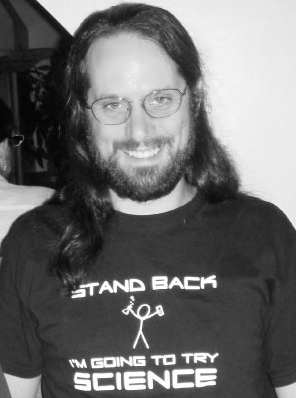
Joshua Zucker
Joshua is the Director of the Julia Robinson Mathematics Festival. What excited me so much about this festival when I first encountered it in 2014 was the fraction of girls who attended. The stereotypical attendee at most math competitions are competitive boys- this festival stresses co-operative problem solving and rewards children for tenacity – not for results. It works so, so well – and seems to work cross-culturally (I’ve helped to host the festivals in the U.S., Canada and China and the children’s experience looks identical.)
Joshua is an able leader of this inspired initiative. Many of the table activities are designed by him, and they are magnificently crafted hierarchical exercises which allow students of different ability to jump right in.
The human heart likes a little disorder in its geometry.
Perfect numbers like perfect men are very rare.
You don’t have to be a mathematician to have a feel for numbers.
It’s clearly a budget. It’s got a lot of numbers in it.
God may not play dice with the universe, but something strange is going on with the prime numbers.
We must say that there are as many squares as there are numbers.
There is no science in this world like physics. Nothing comes close to the precision with which physics enables you to understand the world around you. It’s the laws of physics that allow us to say exactly what time the sun is going to rise. What time the eclipse is going to begin. What time the eclipse is going to end.
To my mathematical brain, the numbers alone make thinking about aliens perfectly rational. The real challenge is to work out what aliens might actually be like.
In the minds of perhaps a majority of persons, education still consists in the acquiring of certain facilities for particular purposes in life. But this does not deserve the name of education. A system of instruction adapted merely to this purpose, enslaves and degrades human nature. It reduces men to machines, by bringing up workmen for a manufactory…
The mind of the child is considered a mere receptacle, which is to be stored with knowledge. Its pliability is abused into a mechanical and spiritless routine… for in receiving knowledge, the pupil is merely passive.
There’s a good case to be made that having fun is a key evolutionary advantage right next to opposable thumbs in terms of importance. Without that little chemical twist in our brains that makes us enjoy learning new things, we might be more like the sharks and ants of the world.
Life is more fun if you play games.

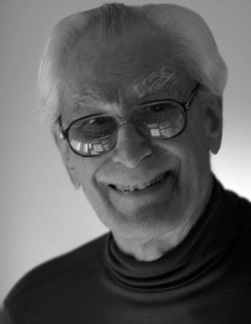
Richard Kenneth Guy
1916 -
Richard is author of “Unsolved Problems in Number Theory” and therefore the single most influential person in the development of MathPickle. He’s Professor Emeritus in the math department at the University of Calgary.
My desite has been to pursue mathematics, mainly in the selfish was of just enjoying it on my own, but also wanting to pass this enjoyment on to other people, particularly as I get older and feel that at least I owe something for the terrific privilege that I’ve had of being able to live, all the time doing what I wanted to do.
His life is inspirational for its breadth and depth of passions – the big three being mountaineering, mathematics, and his wife, Louise, who died at aged 94 in 2010.
James Tanton (also featured on this list) came to visit Calgary in 2013 and Richard invited us over for a meal. Our melon was cut in slices, our chicken cordon-blue succulent. Approaching 100, Richard is something! Listen to him at age three when his parents asked him eagerly how his first day had been in kindergarten:
It was alright, but the teacher doesn’t know much. She asked me what shape the world was and all sorts of things that I thought she would have known.”
Richard retired in 1982 at age 65. Of course, he didn’t retire – you can knock on his door any day, and there he is wrapped up in mathematics:
I didn’t retire, they just stopped paying me. I was quite happy to retire. I knew that I could go on doing what I wanted to do.
I thoroughly recommend the Alpine Canada book which celebrates the life of this great human being. Click here.
Photo by Thane Plambeck
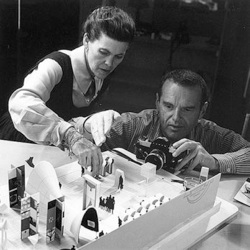
Charles & Ray Eammes
Designers who entered the world of film with some mathematical masterpieces:
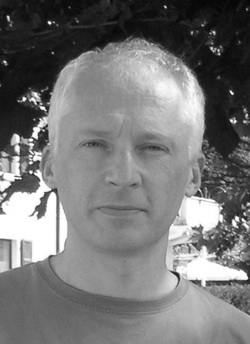
Marcus du Sautoy
1965 -
Marcus du Sautoy is the sartorially charismatic Simonyi Professor for the Public Understanding of Science, a mathematics professor at Oxford, and one of the great popularizers of mathematics.
Photo by Niccolò Caranti
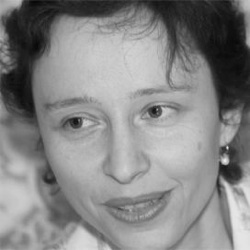
Maria Droujkova
Maria is the founder of the Math 2.0 Interest Group which is helping math education communities talk to one another through frequent webinars. She is also co-author of the joyous “Moebius Noodles – Adventurous math for the playground crowd.”
Visit her web site here.

Hans Rosling
1948 -
Hans is our adorably eccentric apologist for statistics. His web siteis brilliant for dynamic plotting of demographic trends – cell phone usage over the last two decades or child mortality over the last two centuries. Look at him talk about statistics in this video: https://youtu.be/BPt8ElTQMIg
Photo by Tobias Andersson Åkerblom
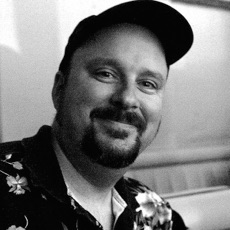
Jim Bumgardner
Do mazes belong in the math classroom? Absolutely – in fact this was my only academic outlet from grade 4 to grade 5 after I moved from Northern Ireland and started failing in a Canada’s very different school system. I created complex analysis of mazes and how to make them as difficult as possible using a specific number of lines. To make mazes really interesting for the younger grades, I have just emailed Jim Bumgardner and asked him to produce mazes in pairs – one possible and one impossible.

Erich Friedman
1965 -
Erich is the top resource for math puzzles. He is prolific and reliably brilliant.
Visit his Puzzle Palace and assign some of his puzzles as homework, but don’t miss the rest of his extensive web site especially his Packing Center.
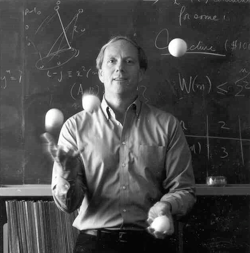
Ron Graham
1935 -
Ron Graham is a mathematician, and as you can see he also juggles. There is a lot of mathematics in juggling, so it is a hobby for a lot of young mathematicians. Ron Graham is a past president of the International Juggler’s Association.
One unsolved problem with Egyptian fractions (fractions with 1 as the numerator) was posed by Ron Graham in 1964 and is related to a lot of solvable challenges for students learning how to add and subtract fractions with different denominators. Here is one: Start with 17/20 of a pie. Greedily choose the largest Egyptian fraction you can. Repeat this until you’ve eaten everything.
17/20 – 1/2 = 7/20
7/20 – 1/3 = 1/60
1/60 – 1/60 = 0
Now try it with 16/20, 18/20 and 19/20. Remember to be greedy! You must always choose the largest piece.
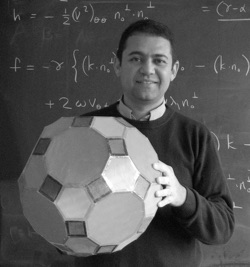
Jesús A. De Loera
Jesús is passionate about polytopes… This lecture is pure mathematical joy laced with humour.
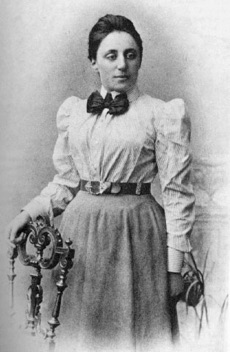
Emmy Noether
1882-1935
The University of Göttingen had a policy against women becoming professors, but Emmy was so good they had to do something. They gave her the grand title “unofficial associate professor” before stripping it away in the anti-Jewish pogroms of the early 1930s. She escaped to the United States where she helped Einstein with the general theory of relativity.
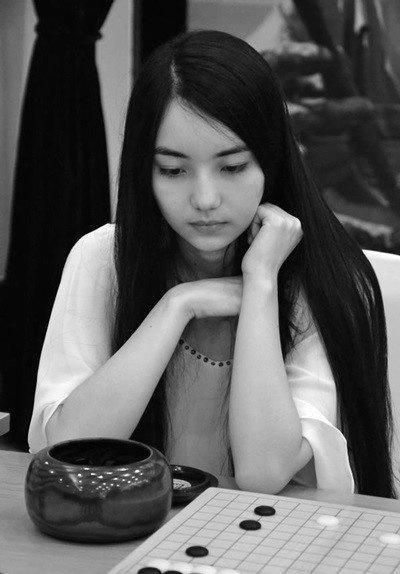
Joanne Missingham
Joanne Missingham is a young highly ranked (6p) go player, but she is also an outspoken advocate on good parenting, good teaching and being a responsible son or daughter:
If you want parents to respect your decision, you have to assure them that your decisions won’t hurt your future. To do this you have to learn 4 things:
1) Endure loneliness
2) Overcome temptation
3) Learn to choose
4) Learn how to let go
To see her talk on education and parenting go here.
Go should be considered very strongly in every school. Replacing any existing age-7 mathematics curriculum with go will probably produce better age-15 rigorous problem solving and mathematical skills. Would someone please test this!
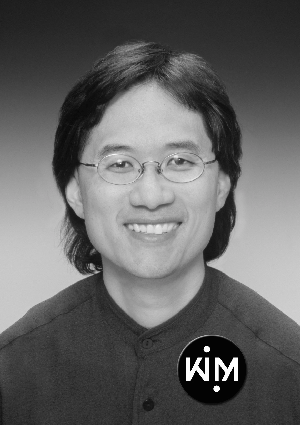
Scott Kim
Ambigrams are playful creations at the intersection of calligraphy and symmetry operations. Your students could learn about mirror, translational and rotational symmetry through simple geometric shapes, but they should also learn about symmetry through M. C. Escher’s art or Scott Kim’s calligraphic ambigrams:
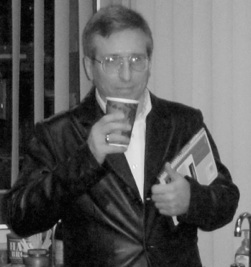
Ed Pegg Jr.
1963 -
Ed is the amateur mathematician behind one of the greatest puzzle web sites: mathpuzzle.
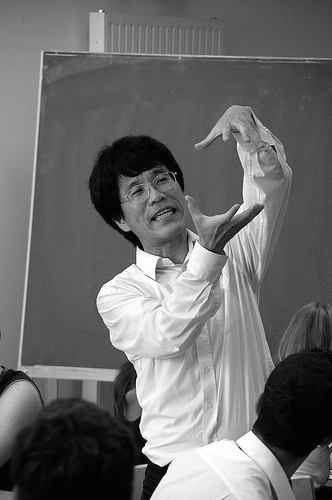
Tadashi Tokieda
If I had to choose only one person’s ideas to rejuvenate school mathematics worldwide it would be Tadasi Tokeida’s. He asks us to observe simple phenomena and toys and brings us to a place of deep mathematics with more joy and curiosity than anybody else. If you are a high school math teacher, do yourself a favour and watch some of Tadashi’s YouTube videos: #1, #2, #3.
All of these activities should urgently be developed for the K-12 classroom. If the mathematics is too tough – that’s okay – it is Tadashi’s playful attitude to asking questions that is absolutely inspiring!
Of all the people in the world that I have yet to meet, Tadashi is top of the list.
P.S. If anyone wants to establish the equivalent of a Nobel prize in mathematics education – Tadashi would be an excellent first recipient 😉
Children at play are not playing about; their games should be seen as their most serious-minded activity.
Mathematics are the result of mysterious powers which no one understands, and which the unconscious recognition of beauty must play an important part. Out of an infinity of designs a mathematician chooses one pattern for beauty’s sake and pulls it down to earth.
Mathematics is a place where you can do things which you can’t do in the real world.
Many teachers seem not to know that there is more than one way to do a thing, or think of a thing; and if they find a scholar pursuing a method different from their own, they suppose of course he must be wrong, and they check him at once, and endeavour to force him into their way, whether he understands it or not… Nothing is more discouraging to scholars, than to interrupt them, when they are proceeding by a method which they know to be right; and to endeavour to force them into one which they do not understand, and which is not agreeable to their way of thinking.
Logic and mathematics are nothing but specialized linguistic structures.
We especially need imagination in science. It is not all mathematics, nor all logic, but it is somewhat beauty and poetry.
The habit of attention, the power of abstraction, and of bringing the mind for a length of time to bear upon the same subject, and, above all, that strength which will sustain intellectual labour without fatigue, must be acquired early, or they will never be our own.
Maria Montessori might have used the word “mathematics” as a pejorative, but her schools teach mathematics with a sprinkling of poetry.
Beauty is the first test: there is no permanent place in the world for ugly mathematics.

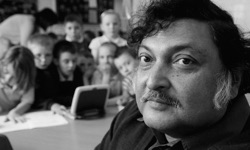
Sugata Mitra
1952 -
Sugata has experimented with alternate models of education. He is most famous for his “Hole in the Wall Experiment” in which a poor neighbourhood was provided with a computer screen, internet access, but no instruction. Children quickly managed to figure things out by themselves.
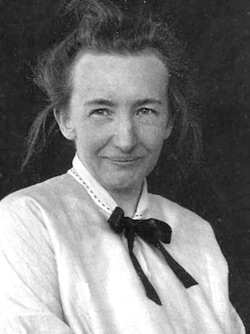
Tatiana Ehrenfest-Afanassjewa
1876 - 1964
A Russian / Dutch mathematician who advocated against the step by step instruction of Greek geometry. She skipped over obvious proofs – telling her students that these could be re-visited later. She also loved getting her students to experiment – using clocks to talk about angles and asking how many desks could be placed against the classroom wall.
Here is an English translation of a German paper she wrote in 1931.

Norman Wildberger
I really like Norman’s set of YouTube videos. They are refreshingly controversial so I’d recommend them only to you geeky teachers out there. Click here for his YouTube page.
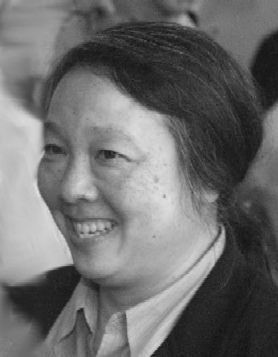
Lai-Sang Young
1952 -
You’ve heard about the flap of a butterfly’s wings in Mexico causing a Caribbean hurricane. Well of course this is very, very, very unlikely, but exactly how unlikely? Lai-Sang Young is a world leader exploring probabilities in chaotic systems.
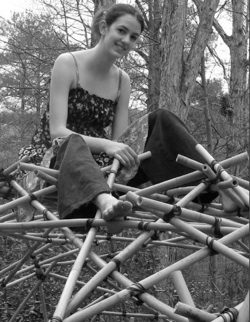
Vi Hart
Vi is a musician, artist and comedian whose work is inspired by mathematics. Her math videos are most engaging and she is continually coming up with fun, mathematical explorations – many of which are good for a classroom activity. Here’s one with a positive social message as well as an engaging math problem for students at about grade 3 or 4: http://ncase.me/polygons/
Photo by Thane Plambeck
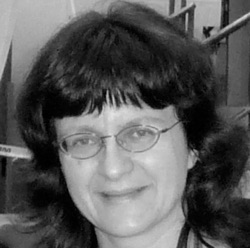
Julia Brodsky
Julia Brodsky is a founder of Art of Inquiry which is a stimulating enrichment program for students aged 6-9. Visit the Art of Inquiry here.
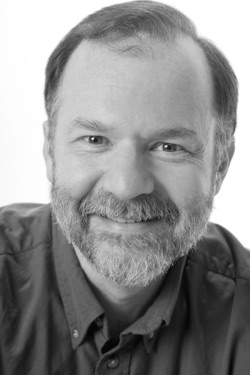
Robert Lang
1961 -

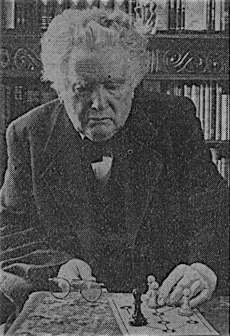
Frederik Schuh
1875 - 1966
Fred was a Dutch mathematician who engaged the public with books on gambling, games and puzzles. In 1952 he developed the game “Chomp” which has the interesting property that we know the first player can always win, but we don’t know how to make this happen. Games become solved if we figure out how to play them perfectly. Imagine a strategy game like Go, Chess, or Dvonn being played by two infinitely intelligent gods: black and white. Then the result will be the same every time they play. Either black will always win – or white – or it will be a tie. Games of luck like Rock-paper-scissors can also be solved by these gods, but here there will at least be a little bit of excitement about the outcome!
Today’s scientists have substituted mathematics for experiments, and they wander off through equation after equation, and eventually build a structure which has no relation to reality.
Arithmetic, when properly taught, is acknowledged by all to be very important as a discipline of the mind; so much so, that even if it had no practical application, which should render it valuable on its own account, it would still be well worth while to bestow a considerable portion of time on it for this purpose alone.
As a graduate student I studied mathematics fairly broadly, and I was fortunate enough, besides developing the idea which led to ‘Non-Cooperative Games,’ also to make a nice discovery relating to manifolds and real algebraic varieties.
There is no other science so admirably calculated to draw out the thinking faculties in children, and therefore none which forwards so effectually the purposes of elementary education. It is on this account that Pestalozzi, and all modern reformers of education, have devoted so much of their attention to arithmetic and geometry. These two studies, when pursued in the proper manner, go hand in hand, and form the very ground-work of an intellectual education. They are almost the only branches taught at schools, which call upon the pupil’s judjement, prompt his mind to thought and reflection, and teach him to reason from given things to things unknown. They lead the pupil to institute comparisons, and to determine the relations which things bear to each other. Thus exercising every faculty of his mind, he acquires a habit of close attention, and strengthens and confirms his mental energies by concentrating them, and bringing all to bear upon the same point. With this regard it may be said that mathematics facilitate every other study. The mind which is once to a certain degree developed, and which has acquired the habit of thinking and reasoning, can easily apply the same powers to other branches of knowledge. Whatever study the pupil may now undertake, is entered upon more systematically. He is now accustomed to investigate for himself. He has not the same dependence on authority; nor does he lay so much stress on the conceptions of others, until they are made his own by a fair appeal to his understanding.
Our text-books have lately arrived at such perfection as to render explanations and lectures from the instructor altogether superfluous…
God exists since mathematics is consistent, and the Devil exists since we cannot prove it.
The definition of a good mathematical problem is the mathematics it generates rather than the problem itself.
Games give you a chance to excel, and if you’re playing in good company you don’t even mind if you lose because you had the enjoyment of the company during the course of the game.

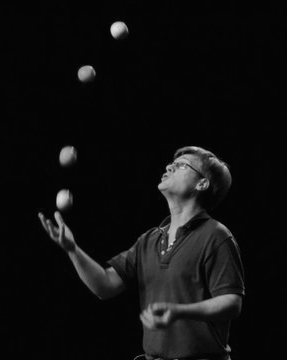
Colin Wright
This intensely Aussie mathematician / juggler developed the SiteSwap notation to help jugglers record and communicate their patterns. It ended up to be such a powerful notation that new juggling patterns were discovered. SiteSwap should be in ALL math curricula worldwide. It is beautiful and engaging for children. If school children learn how to juggle – well that’s just a fun side effect 😉
Here is a great lecture by Colin and here are Colin’s notes on SiteSwap. Here is a cool Brazilian video showing a top juggler using SiteSwap.
I had the pleasure of rooming with Colin and Henry Segerman (also featured on this list) at the Gathering for Gardner in 2010. Inspired people!
Photo by Ben Sparks.
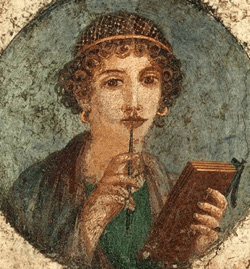
Hypatia
370 - 415
Hypatia was a brilliant classical scholar who taught philosophy, edited /compiled works on astronomy, and developed her own mathematics. Her works are all lost, and it is her tragic murder at the hands of a probably Christian mob that has become the infamous stuff of legend.
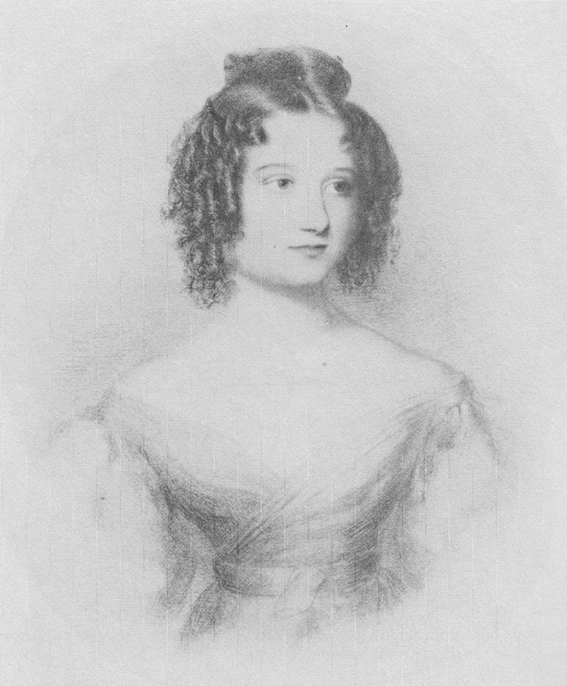
Ada Lovelace
1815 - 1852
Her father – Lord Byron the poet – so infuriated Ada’s mother that she took baby Ada and brought her up with a focus on mathematics instead of poetry. It worked. Ada grew up with a keen mathematical mind. In 1843 she wrote the first computer program – long before computers, as we think of them, were invented. The program calculated an important sequence in number theory called the Bernoulli numbers. The machine to run the program was not built during her lifetime, but it later was shown to work perfectly. The world’s first computer programmer did not live a long life.
Like her father, Ada died at age 36 – both as a result of being bled (an old medical practice that successfully reduces fever.)
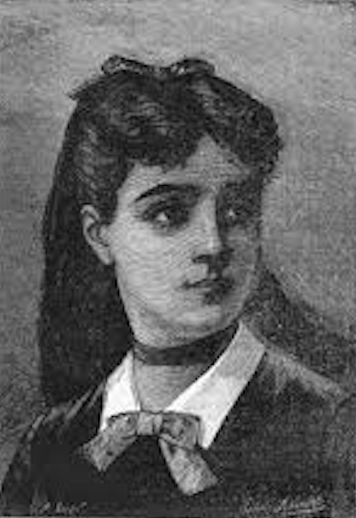
Sophie Germain
1776 – 1831
It is hard to ethically understand a society which excluded women in participating in the profession of their choice, but for most of world history this was the case. The barrier to women mathematicians has gradually decreased thanks to those like Sophie Germain who so obviously belonged at the table.
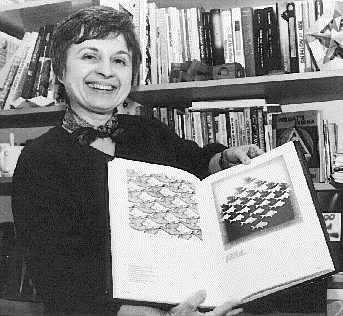
Marjorie Rice
You should neither overestimate the worth of a university degree nor underestimate those with limited credentials. High school graduate, Marjorie Rice, discovered four new classes of pentagonal tiling patterns between 1975 and 1976 after mathematician R. B. Kershner announced that he had found the last of them in 1968. All the pentagons must be identical. Here are the 14 that have been discovered so far:
K. Reinhardt, 1918
K. Reinhardt, 1918
K. Reinhardt, 1918
K. Reinhardt, 1918
K. Reinhardt, 1918
R. B. Kershner, 1968
R. B. Kershner, 1968
R. B. Kershner, 1968
R. James, 1975
Marjorie Rice, 1976-77
Marjorie Rice, 1976-77
Marjorie Rice, 1976-77
Marjorie Rice, 1976-77
R Stein in 1985
You can see a discussion here. How many classes of pentagonal tiling patterns still remain to be discovered? Can someone tell me if ANY upper bound has been established?
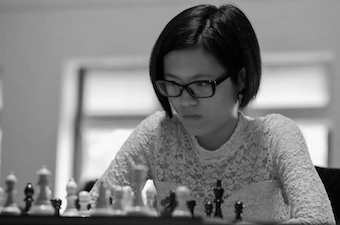

Henri Picciotto
Henri is an insightful educator. I was sure that I had improved on one of his problems by adding a story-line and some beautiful rainbow aesthetics, but he correctly pointed out that perhaps my beautiful aesthetics gave away too much… They were starting students out with a giant hint that they really should have discovered by themselves.
When I lamented the choice of beauty versus pedagogy he immediately responded that I didn’t have to choose – that I only had to add on a little bit at the start of my story – that I was blinded by fog.
My cherished Aesthetics were not lost – just postponed by 5 minutes.
This little vignette shows a man deeply connected to what works and how to get the best out of students (and his peers.)
Henri’s web site is here.

William G. McCallum
William McCallum is the architect of the Common Core Curricular Standards which have (as of 2015) been adopted by 43 states. I was quite skeptical until I sat next to him at an event in Washington DC. The Common Core Curricular Standards are goal posts. They do not say how to reach the goal. They are not a curriculum.
People may quibble about the details – like whether Binary ought to be taught in junior high, but in the grand scheme, this is not as critical as establishing a good set of goal posts.
There is already good consensus with 43 states adopting the Common Core in the USA. Let’s not hesitate to adopt Common Core so that we have a baseline (i) from which to measure performance (ii) to change when evidence indicates a superior Common Core version 2.

Amanda Serenevy
Amanda is the director of the Riverbend Community Math Center. I first met her in Washington DC folding origami with elementary school children. Like all great educators there is an intensity about the way she inspires students in her midst. She really listens to their discoveries and imparts a hunger and an urgency. Somehow she couples this with zen-like calm 😉
In mathematics the art of proposing a question must be held of higher value than solving it.
Poetry is a form of mathematics, a highly rigorous relationship with words.
Mathematics is written for mathematicians.
Guided only by their feeling for symmetry, simplicity, and generality, and an indefinable sense of the fitness of things, creative mathematicians now, as in the past, are inspired by the art of mathematics rather than by any prospect of ultimate usefulness.
As far as the laws of mathematics refer to reality, they are not certain, and as far as they are certain, they do not refer to reality.
One of the things that ultimately led me to leave mathematics and go into political science was thinking I could prevent nuclear war.
I like mathematics because it is not human and has nothing particular to do with this planet or with the whole accidental universe – because, like Spinoza’s God, it won’t love us in return.
I am interested in mathematics only as a creative art.


Danica McKellar
1975 -
Danica probably knows how to write the language of average North American teenage girls better than any other mathematics educator. She’s sexy, funny and her books are just a great first jump into math for a sizeable fraction of girls who have been turned off the subject. Her book titles tell it all:
Kiss My Math: Showing Pre-Algebra Who’s Boss.
Hot X: Algebra Exposed.
Girls Get Curves: Geometry Takes Shape.
Photo by Craig Sjodin
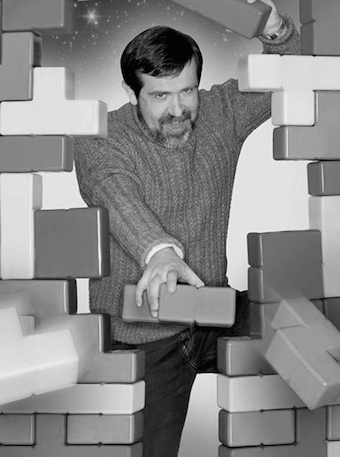
Alexey Pajitnov
1956 -
The person responsible for wasting time more than any other person. Not coincidently, also the designer of Tetris.
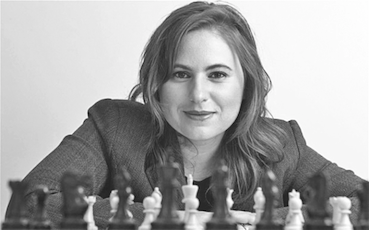
Judit Polgár
In 1991 Judit Polgár attained the title of Grandmaster at the age of 15 years and 4 months. This was the youngest anyone had become a Grandmaster. In 2005 she was rated the eighth top player in the world. She has been rated the top female player from 1989 when she was 12 till 2015 when she lost the title to Hou Yifan.
How often do students use digital games in your classroom?
- every day 9%
- every week 55%
- every month 80%
Survey of 513 teachers who use digital games by the Joan Ganz Cooney Center
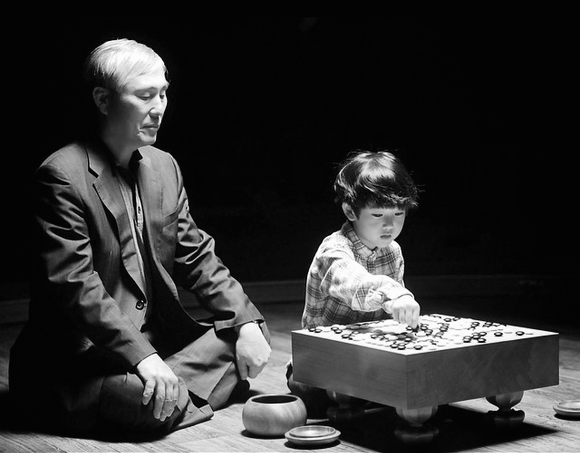
Cho Hunhyun
1953 -
This quote is from Jonathan Hop at “Sunday Go” describing the quirks of one of the South Koreas’s greatest go players Cho Hunhyun nicknamed the God of War:
Cho is a rather awesome guy. He still plays Go well into his sixties when most professionals retire before their forties. He’s a ball of nervous ticks. He digs into his bowl and rattles the stones, he groans out loud if his opponent plays a good move, and even sometime sings and hums to himself. You’re not supposed to create a ruckus so as not to break your opponent’s concentration, but Cho doesn’t really seem to care all that much about that. One thing Cho does that is a big no-no is to hover your hand over the board when you’re playing a move. Sometimes you want to play a stone on a certain spot, then you back off, and then hover the stone over the spot to help you visualize what the board looks like. It’s a bit annoying, and Cho does it all the time.
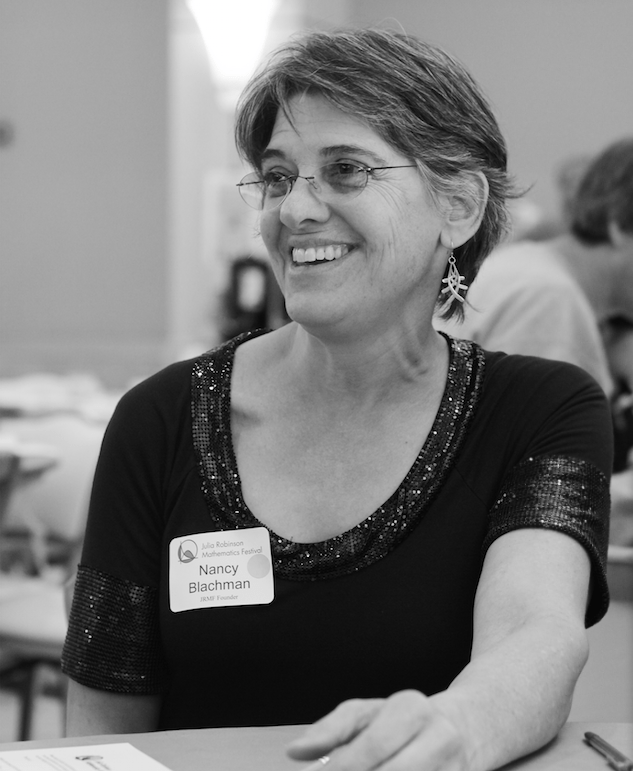
Nancy Blachman
Nancy is the great congregator of talent and the spark that makes things happen. Her passion for mathematics came from time shared with her father, Nelson Blachman. In trying to recreate these experiences she envisioned the Julia Robinson Mathematics Festival which is now the most successful mathematics festival in the United States. Nancy is also the driving force to set up an education website through the American Institute of Mathematics. As if that is not enough, Nancy is also responsible for supporting MathPickle so that for the first time since MathPickle began in 2010 it will be financially sustainable in 2015. I’m so grateful. Thank you Nancy.
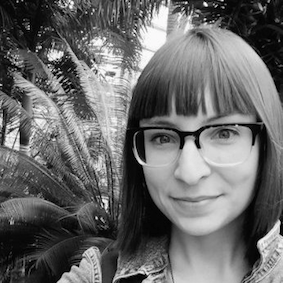
Brooke Havlik
Brooke is the token representative from NOVA that I met at the Library of Congress in 2015. She’s the Education Manager, but its the whole organization that is inspired. Have a look at some of their offerings here. This is both entertainment and educational.
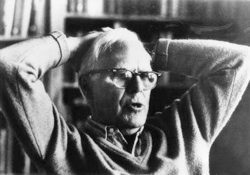
Martin Gardner
1914 - 2010
The great author and popularizer of mathematics was an inspiration to a generation of mathematicians. I like Ronald Graham’s tribute best:
Martin has turned thousands of children into mathematicians, and thousands of mathematicians into children.
Here is an idea for a Magical Mathematics Museum as a tribute to Martin Gardner.
Photo by Konrad Jacobs

Feng Yun
1966 -
Feng Yun is the top ranked female go player (9p). She started the first 9 dan school in North America.
Schools should experiment teaching go* instead of a regular math curriculum for one year to students around the age of 7. It is my prediction that the strong problem solving skills that this will engender will make superior students than any existing mathematics curriculum.
As well as Asia there are already strong initiatives in Europe. The US has many innovative programs. For details look here.
Photo of Feng Yun by Brian Allen
*Go or the modern games of Santorini and Dvonn are the best choices for this because the rules are elegantly simple and are both strategic and tactical. Go has 4000 years of history which makes it a very appealing choice.
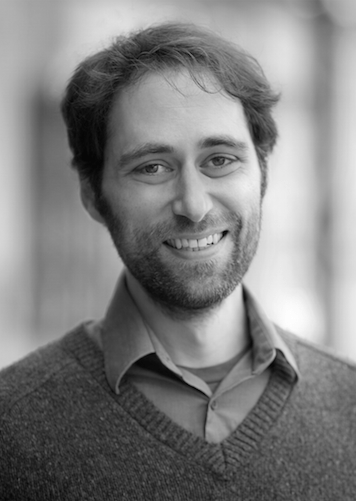
Dan Finkel
Dan Finkel and his wife Katherine Cook are the two halves who founded Math 4 Love. (Dan gets highlighted here only because I don’t know Katherine as well.) Dan provided my best-ever single day of professional development when I followed him around for a day at Nueva school. One highlight was the school assembly which had him run a beautiful computer program that illustrated the integers based on their factors. The students were absolutely transfixed. Dan creates his own puzzles and has also designed a beautiful math game – prime climb.
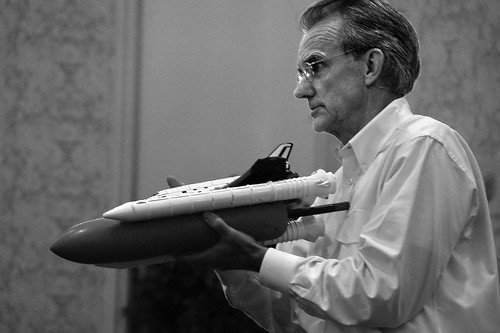
Edward Tufte
An educator at the intersection of mathematics and art. His voice is the most important in how statistics should be introduced to students in school. Perhaps students who go for a less rigorous mathematics program in high school should actually get more of Tufte than their peers.
Here is a sample of his work.
There is geometry in the humming of the strings, there is music in the spacing of the spheres.
Mathematics is the most beautiful and most powerful creation of the human spirit.
The true spirit of delight, the exaltation, the sense of being more than Man, which is the touchstone of the highest excellence, is to be found in mathematics as surely as poetry.
Mathematics is a game played according to certain simple rules with meaningless marks on paper.
Men are liars. We’ll lie about lying if we have to. I’m an algebra liar. I figure two good lies make a positive.
There should be no such thing as boring mathematics.
Pure mathematics is on the whole distinctly more useful than applied. For what is useful above all is technique, and mathematical technique is taught mainly through pure mathematics.
Mathematics is the art of giving the same name to different things.
There is no royal road to geometry.
Drop a stone into water. It makes a sound, “glop” for a big stone, “splitch” for a small stone. Can you predict the pitch of the sound from the size of the stone? The usual teaching of mathematical theories is like a pyramid. Young people tend to become passive (if passionate) admirers of a structure built by old people, and problems they are taught to solve make them walk straight up to the peak. But what if we want to explore a natural mountain range, whose peaks are invisible among clouds, whose trails among trees are unknown? The problem of the sound of a stone falling into water is natural, so natural that every child knows the phenomenon and can wonder about it. The mathematics involved is extremely hard, so hard that it is not taught at any mathematics department in the world.

